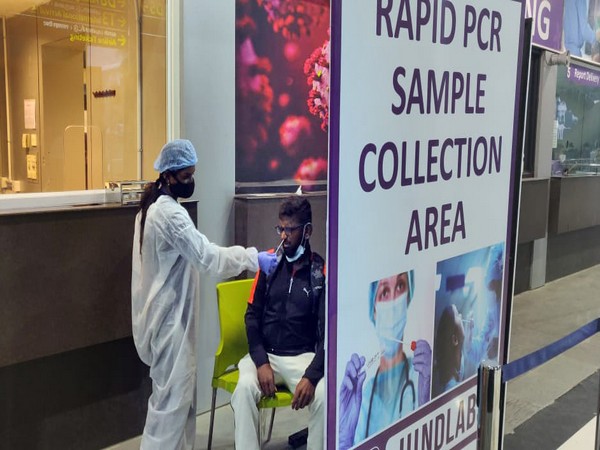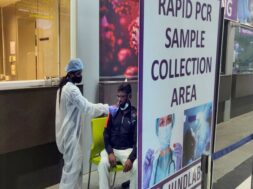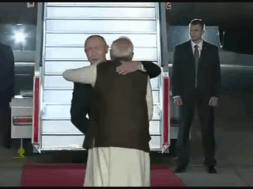
India will Definitely face Third Wave but will be Milder than Second: Experts
Manas Dasgupta
NEW DELHI, Dec 18: Even as the British government is reported to be considering yet another complete lockdown to break the raging Omicron variant, some experts have warned of a “definite third wave” in India too with the arrival of the new year.
The experts believe the Coronavirus disease may start surging in India once the Omicron variant start replacing Delta variant as the dominant strain. But the experts are equally confident that the third wave in India would not be as deadly as the second wave and would also replicate at much slower rate than the number of new cases reported per day during the second wave driven by Delta variant.
“There will be definitely a third wave of coronavirus disease (Covid-19) in India once the Omicron variant starts replacing Delta as the dominant strain, the members of the National Covid-19 Supermodel Committee said. The committee head Vidyasagar estimated that the third wave, driven by Omicron, was likely to arrive early next year and peak in February.
“Third wave is likely to arrive early next year in India. It should be milder than the second wave due to a large-scale immunity present in the country now. There will definitely be a third wave. Right now, we are at around 7,500 cases per day which is sure to go up once Omicron starts displacing Delta as the dominant variant,” Vidyasagar said. as saying.
He, however, disagreed with Niti Aayog (heath) chief Dr VK Paul who had on Friday expressed the apprehension that the number of cases per day in India could go as high as 13 to 14 lakhs in the third wave considering the current surge in the UK and France. “India witnessing more daily infection than the second Covid wave is ‘extremely unlikely,” Vidyasagar said. India had recorded more than four lakh cases a day for about a fortnight during the deadly second wave.
Omicron Covid-19 cases continued to rise in Maharashtra as eight more infections related to the latest variant of the coronavirus were detected on Saturday which have taken the state’s tally to 48. Of the new cases, four were reported from Mumbai, three from Satara and one case from Pune.
In Mumbai, three patients were residents of Chhattisgarh, Kerala and Jalgaon in Maharashtra, while one was a resident of the city.
On Friday, the Union health ministry said the Omicron tally in India stood at 101. New infections have been reported from at least three states, including Maharashtra, in the last 24 hours.
Karnataka reported six new Omicron cases – five of them were found in educational institutions in Dakshina Kannada and one was a returnee from the United Kingdom – while Kerala also logged four fresh infections.
The British government is facing a predicament because of the approaching Christmas celebrations. The scientific advisory group has reportedly presented the UK Prime Minister Boris Johnson with a number of options under Plan C, ranging from “mild guidance to nudge people, right through to lockdown.”
Though Britain was witnessing around 700 to 800 hospital admissions every day for the last seven days, the government is learnt to be panning to wait till the Christmas is over before imposing a short two-week circuit breaker lockdown to keep pace with the rapidly spreading Omicron variant of coronavirus. The draft regulations of the lockdown are being drawn up which would ban indoor mixing except for work purposes, media reports said citing leaked minutes of a meeting of the Scientific Advisory Group for Emergencies. “If the aim is to reduce the levels of infection in the population and prevent hospitalisations reaching the levels of January when more than 3,700 hospitalisations were recorded every day, more stringent measures would need to be implemented very soon,” the committee said.
In India, Vidyasagar pointed out that mass vaccine program which was extended to those other than frontline workers when the Delta variant had just hit, would work as a shield against spread of Omicron. Most of the population was unvaccinated during the start of the second Covid wave which was no longer the case now. Citing the seroprevalence data in India, he pointed out that only a tiny fraction of the public had not come into contact with the coronavirus. “So the third wave will not see as many as daily cases as the second wave. We have also built up our capacity based on that experience, so we should be able to cope without difficulty,” he added.
Vidyasagar said the number of cases would depend on the ability of Omicron to escape vaccine-induced immunity and natural immunity by prior exposure to the virus. “Because these are not known, we have generated various “scenarios,” assuming (for example) 100 per cent vaccine protection remains, or only 50 per cent remains, or all of it goes away. The same for natural immunity escape. For each scenario, we project the number of cases that could result,” he said, adding that India would not have more than two lakh cases per day in the worst-case scenario. But he cautioned that these are projections and not predictions, which could be made once there is more data to show how it is “behaving” with the Indian population.
Another panel member, Maninda Agrawal, said India was likely to report one lakh to two lakh cases per day which would be less than the second wave. Although the UK has high vaccine penetration, Agrawal said, it has low seroprevalence.
“The UK also has an older population as well as more problems with obesity etc. This is why yesterday the UK had 93,045 cases while India, with 20 times the population, had 7,145 cases. In my view, people trying to draw inferences about what would happen in India, based on what is happening in the UK, would be making a major error,” Agrawal added apparently contradicting Dr Paul’s apprehensions on Friday.














